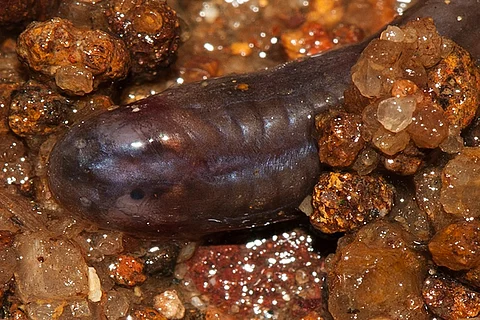

Researchers have discovered a new tadpole that burrows through sand and lives in complete darkness in streambeds in the Western Ghats.
The tadpole, belonging to the Indian Dancing Frog family Micrixalidae, was documented in a joint expedition by a group of scientists from University of Delhi, University of Peradeniya, Sri Lanka and Gettysburg College, USA.
PLOS ONE, an open-access journal, recently published the study on this by Gayani Senevirathne from the University of Peradeniya and colleagues.
According to the study, these tadpoles were discovered in the deep recesses of streambeds where they live in total darkness until they fully develop into froglets.
With muscular eel-like bodies and skin-covered eyes which facilitate burrowing through gravel beds, the tadpole has well-serrated jaw sheaths which may help prevent large sand grains from entering its mouth while feeding and moving through sand.
The Indian Dancing frogs typically wave their legs as a territorial and sexual display while sitting on boulders in streams.
Though these displays are well known, the tadpoles of these frogs were completely unknown. This was, in fact, the only family of frogs and toads whose tadpoles remained a mystery.
"We provided the first confirmed report of the tadpoles of Indian Dancing Frog family. These tadpoles probably remained unnoticed all these years because of their fossorial nature which in itself is a rare occurrence in the amphibian world," Prof S D Biju from University of Delhi said in a statement.
Very little is known about the habitat requirements of these tadpoles. Observations made so far show that they inhabit sandy banks under canopy-covered streams, it said.
The new finding reiterates the uniqueness of amphibians of the biodiversity hotspot of Western Ghats, providing a platform for future studies on this amphibian family, while also delivering useful information for conservation of these ancient and endemic frogs, the researcher added.